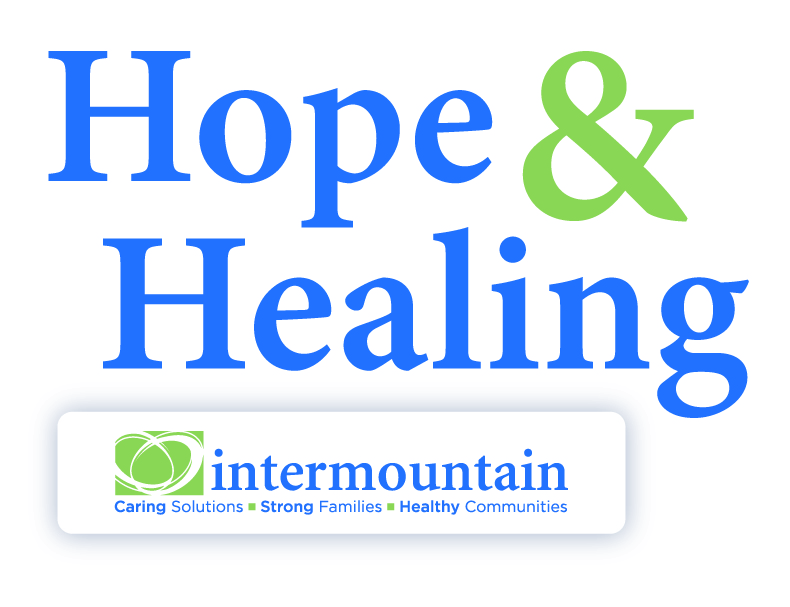By Adam Jespersen, Associate Director of Development
Every organization that exists for any length of time experiences critical events that serve to define the course of the future. Call them forks in the road, pivotal moments, or just “really big deals,” these events shape the organization and force it to adapt.
As a 106-year-old nonprofit, Intermountain, not surprisingly, has been shaped and guided by a number of these events. Some are easy to recognize: the Depression-era earthquake that destroyed our original dormitory, and the much more planned move to our current residential campus in 1971.
There are other events in Intermountain’s history, though, that are a bit less dramatic than an earthquake or the building of a new campus, but which, nonetheless, can be seen in retrospect as the “day that everything changed” in our culture and our mission to children and families. The shift to our relational treatment model in the early-1980s (the nexus of our mission of Healing through Healthy Relationships) and the start of our adoption support services in the late-1990s (our first foray outside of residential care) are just two examples.
Today, as we wrap up our five-year Healing a New Century fundraising campaign – the largest in Intermountain’s history — I’m convinced that we are right in the middle of another “really big deal” that will forever alter our direction moving forward.
For more than a century, Intermountain has maintained its same mission – to heal the suffering of children and families through the constant nurturance of relationship. What has changed over the past century is the manifestation of that mission, which has adapted in direct response to the needs of the community at that point in history.
At inception, Intermountain met the basic needs of children – food, shelter, education, and a sense of family – in a hardscrabble mining frontier. In the 1950s, the organization began serving delinquent youth in response to the developing welfare and juvenile justice systems. And in the 1970s, Intermountain began its evolution toward campus-based residential care, largely due to the severity of disturbance that leaders of the organization saw in the youth it was serving.
Thanks to the many donors who have supported Intermountain through this campaign, the agency today looks drastically different than it did only 15 years ago. Today, Intermountain is in the healthcare business, specializing in the care of children, youth, and families suffering from emotional distress and mental health issues. And more than ever, in spite of its expertise and history in campus-based care, our services are focused on reaching children and families before their struggles reach the point of crises that necessitate intensive, residential treatment.
Consider the Mayo Clinic. Mayo is world renowned for its expert care of patients with rare and severe illnesses. The specialists who serve at Mayo have each seen hundreds of one-in-a-million cases. But more than ever, Mayo is putting its resources into education, accessibility, and prevention efforts to combat illness before it reaches the point of intensive medical care. Its greatest impact lies not with its world-class hospitals, but in the dissemination of its vast knowledge into communities across the country to foster healthy lifestyles and preventative care.
Today’s Intermountain – albeit on a much smaller and more humble scale than Mayo – has a similar approach. We are very adept in providing intensive residential care to the traumatized child under severe emotional distress. Our outcomes for these children and their families are outstanding. And we are encouraged to see, increasingly, that today’s foremost clinical research is affirming what we have been preaching and practicing for decades regarding childhood trauma.
Regardless, however, we see that our greater community impact lies in embedding ourselves into the fabric of our communities – in schools, in clinics, and in homes – to provide caring solutions that strengthen families and keep kids in their homes.
Today’s Intermountain serves roughly 800 children and families every day from across Montana, but only four percent are in residential care. In addition to our flagship residential program, today’s Intermountain meets children and families where they live and learn and treats not just severe emotional disturbance but also substance abuse, psychosocial issues, family functioning, Autism Spectrum Disorders, and much more.
We have asked much of our donors, volunteers, and the community during this campaign, and we are deeply honored by their commitment to our growing mission. For all of Intermountain’s 106 years of “pivotal moments,” two themes have remained constant – visionary and resolute leadership and a community committed to ensuring that the mission continues.
One of the most pivotal events in Intermountain’s history was the 1935 earthquake that destroyed Van Orsdel Hall, our north valley dormitory. Fundraising for construction of the Hall had begun in about 1915 and building began in 1922. Van Orsdel Hall represented visionary leadership and a generous community coming together to increase impact, as Intermountain was out of space and was turning away nearly as many children as it admitted.
Sadly, the earthquake destroyed not only Van Orsdel Hall (before a single child could live in it) but also Intermountain’s other dormitory, making the kids homeless and leaving Intermountain’s leaders stunned at the loss of everything they had built and were building for the future. Overnight, an era of promise for Intermountain became an era of survival. But again, through the ingenuity and generosity of the community, Intermountain was able to stay standing.
Today, we are not facing a campus reduced to rubble, but we are facing an era of change and of promise, born out of our foundational belief that we must be responsive to the most pressing needs of our community. And as in the 1930s — and practically every decade thereafter — Intermountain’s ability to continue being relevant and meaningful to today’s generation of children and families is wholly reliant upon the very communities that we exist to serve.
With humility and resolve, we express our thanks to you – our donors, our volunteers, our clients, and our community – for your commitment to the Healing a New Century campaign.
Thank you for continuing to make Intermountain – and the emotional health of our communities’ children, youth, and families – your priority. And here’s to another 106-years of pivotal moments of service.
Adam Jespersen, Associate Development Director, has been with Intermountain since 2009 and provides leadership and management of all fundraising activities, with specific expertise in grant writing. Adam received his Bachelor of Arts from Carroll College and is currently pursuing his Master’s in Business Administration from the University of Montana.




